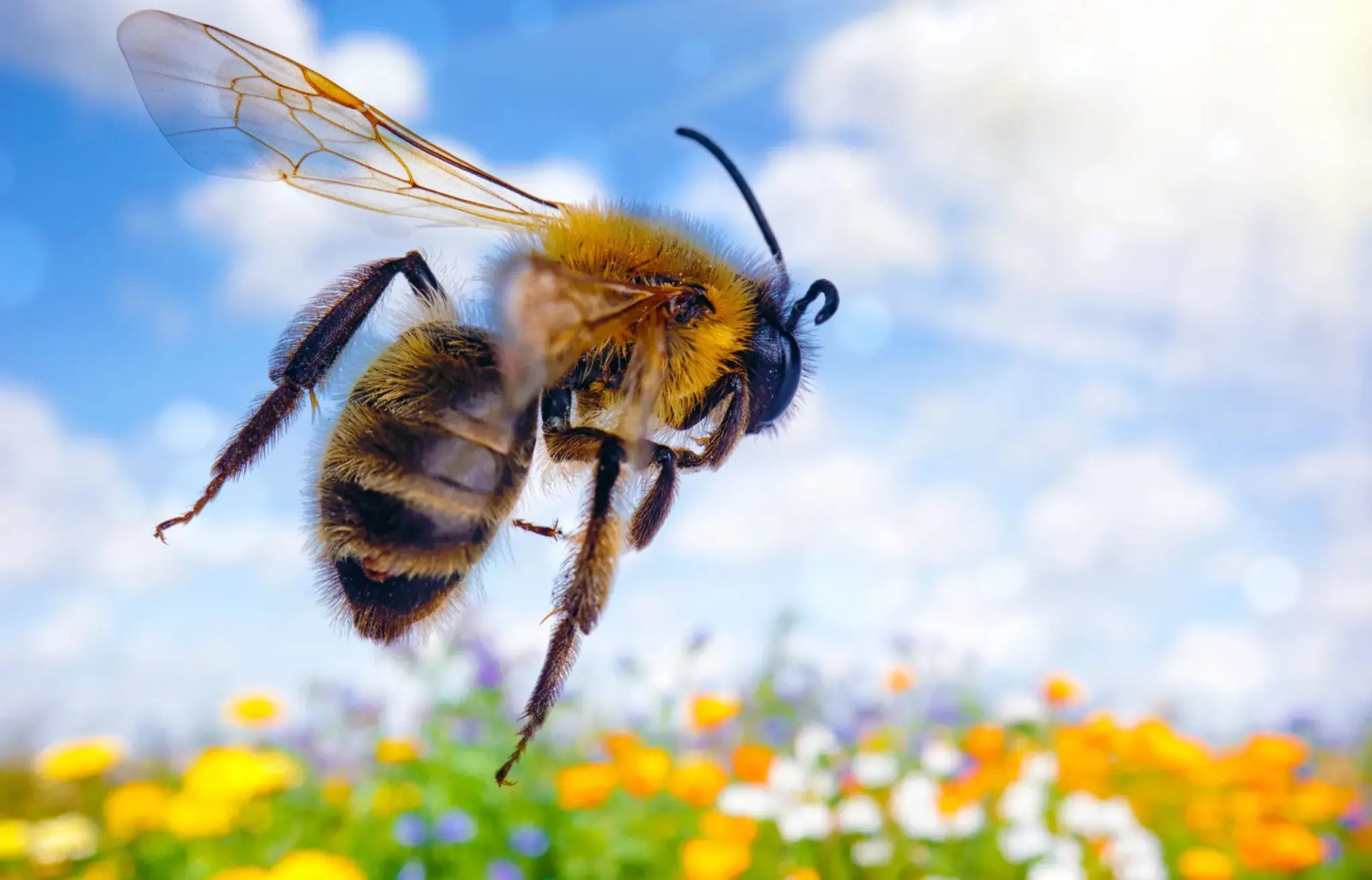About Bumblebees:
- They are large, hairy, social bees belonging to the family Apidae (subfamily Bombinae).
o The family Apidaeincludes the well-known honey bees and bumble bees, as well as carpenter bees, cuckoo bees, digger bees, stingless bees, and orchid bees.
- Distribution:
- They occur throughout much of the world but are most common in temperate climates.
- There are over 250 known species, existing primarily in the Northern Hemisphere.
- They are known for their ability to collect nectar from flowers and pollinate plants.
- Features:
- They are large, yellow,and black flying insects with a distinct buzz.
- There is variation in coloration among bumblebees, and some species have bands of red, yellow, and black.
- They have stocky bodies that are covered with many hairs to which pollen adheres.
- Bumblebees have four wings; the two rear wings are small and usually attached to the fore wings by a row of hooks called hamuli.
- The wings move rapidly, at 130-240 beats per second.
- They are social insects that live in colonies. The queen bee, drones, and worker bees all have specific tasks to help support the colony.
- Unlike the honeybee, bumblebees do not make honey, as they do not need to store food for winter. Instead, the season’s new queens hibernate and emerge to find their own nests in the spring.
Q1: What are Pesticides?
Pesticides are chemical compounds that are used to kill pests, including insects, rodents, fungi and unwanted plants (weeds). Over 1000 different pesticides are used around the world. Pesticides are used in public health to kill vectors of disease, such as mosquitoes, and in agriculture to kill pests that damage crops.
Last updated on June, 2025
→ UPSC Notification 2025 was released on 22nd January 2025.
→ UPSC Prelims Result 2025 is out now for the CSE held on 25 May 2025.
→ UPSC Prelims Question Paper 2025 and Unofficial Prelims Answer Key 2025 are available now.
→ UPSC Calendar 2026 is released on 15th May, 2025.
→ The UPSC Vacancy 2025 were released 1129, out of which 979 were for UPSC CSE and remaining 150 are for UPSC IFoS.
→ UPSC Mains 2025 will be conducted on 22nd August 2025.
→ UPSC Prelims 2026 will be conducted on 24th May, 2026 & UPSC Mains 2026 will be conducted on 21st August 2026.
→ The UPSC Selection Process is of 3 stages-Prelims, Mains and Interview.
→ UPSC Result 2024 is released with latest UPSC Marksheet 2024. Check Now!
→ UPSC Toppers List 2024 is released now. Shakti Dubey is UPSC AIR 1 2024 Topper.
→ Also check Best IAS Coaching in Delhi
























